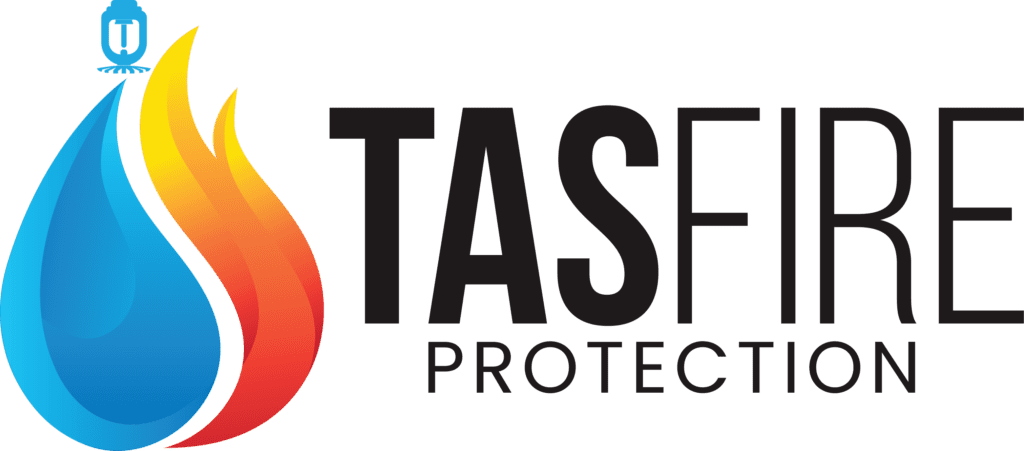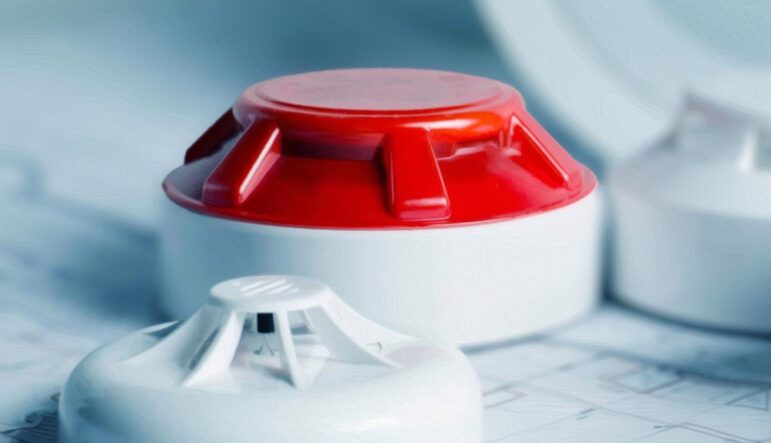Smoke Detectors vs CO Detectors: Understanding the Essential Safety Devices for Your Home…
 When it comes to protecting your family and property from life-threatening dangers, smoke detectors and carbon monoxide (CO) detectors are both crucial to the safety of any home or building. These devices serve as early warning systems, alerting occupants to potentially deadly situations before they become fatal. Understanding the differences between these two types of detectors, how they work, and proper maintenance practices can mean the difference between life and death.
When it comes to protecting your family and property from life-threatening dangers, smoke detectors and carbon monoxide (CO) detectors are both crucial to the safety of any home or building. These devices serve as early warning systems, alerting occupants to potentially deadly situations before they become fatal. Understanding the differences between these two types of detectors, how they work, and proper maintenance practices can mean the difference between life and death.
What is a Smoke and CO Detector?
Smoke Detectors are electronic devices designed to detect the presence of smoke particles in the air, which typically indicate a fire. These devices trigger loud alarms to alert occupants of potential fire dangers, providing precious time to evacuate safely or take appropriate action.
Carbon Monoxide (CO) Detectors are specialized devices that monitor air quality for the presence of carbon monoxide gas, an invisible, odorless, and tasteless gas that can be lethal in enclosed spaces. Often called the “silent killer,” carbon monoxide poisoning claims hundreds of lives annually.
Both devices are crucial to the safety of any home or building because they protect against different but equally dangerous threats that can occur at any time, day or night.
What Are Two Types of Smoke Detection?
There are two main smoke detector types based on their detection technology:
1. Ionization Smoke Detectors
These detectors use a small amount of radioactive material to ionize air molecules, creating an electrical current between two plates. When smoke particles enter the chamber, they disrupt this current, triggering the alarm. Ionization detectors are particularly effective at detecting fast-burning fires with small smoke particles, such as paper or grease fires.
2. Photoelectric Smoke Detectors
These devices use a light beam and photocell sensor system. When smoke particles enter the detection chamber, they scatter the light beam, causing it to hit the photocell sensor and trigger the alarm. Photoelectric detectors excel at detecting slow-burning, smoldering fires that produce larger smoke particles, such as furniture or electrical fires.
What Are CO Detectors Used For?
CO detectors are specifically designed to monitor and detect carbon monoxide gas levels in indoor environments. They are used for:
- Preventing Carbon Monoxide Poisoning: Early detection of dangerous CO levels before they reach lethal concentrations
- Monitoring Fuel-Burning Appliances: Detecting malfunctions in furnaces, water heaters, stoves, and fireplaces
- Vehicle Exhaust Detection: Identifying CO from attached garages or nearby vehicles
- Generator Safety: Monitoring CO levels when using portable generators
- Workplace Safety: Protecting employees in commercial buildings with fuel-burning equipment
How Do Carbon Monoxide Fire Alarms Work?
Carbon monoxide detectors operate using different sensing technologies:
Electrochemical Sensors
The most common type uses electrochemical cells containing gel electrolytes. When CO enters the sensor, it reacts with the electrolyte, producing an electrical current proportional to the CO concentration. When levels exceed safe thresholds, the alarm activates.
Metal Oxide Sensors
These sensors use a silicon chip that changes electrical resistance when exposed to carbon monoxide. The detector monitors these resistance changes and triggers an alarm when dangerous levels are detected.
Biomimetic Sensors
These devices use gel that changes color when exposed to CO, similar to how hemoglobin in blood reacts to carbon monoxide. Color changes trigger the alarm mechanism.
How Does a Smoke Detector Work?
Smoke detectors function through two primary detection methods:
Ionization Detection Process
-
- Radioactive material ionizes air molecules in a detection chamber
- Ionized particles create a steady electrical current between two plates
- Smoke particles entering the chamber disrupt this current
- The disruption triggers the alarm circuit
- The device sounds an audible alert to warn occupants
Photoelectric Detection Process
-
- A light source emits a beam that normally doesn’t hit the photocell sensor
- When smoke enters the chamber, particles scatter the light beam
- Scattered light hits the photocell sensor
- The sensor detects this light and triggers the alarm circuit
- The alarm sounds to alert occupants of potential fire
Types of Smoke and CO Detectors
Smoke Detector Varieties
-
- Battery-Powered Detectors: Independent units powered by replaceable batteries, ideal for easy installation in any location without electrical wiring requirements.
- Hardwired Detectors: Connected directly to household electrical systems, often with battery backup for power outage protection.
- Smart/Connected Detectors: Advanced units that connect to home automation systems and send alerts to smartphones, providing remote monitoring capabilities.
- Combination Units: Devices incorporating both ionization and photoelectric technologies for comprehensive fire detection.
CO Detector Types
-
- Plug-in Detectors: Simple units that plug directly into wall outlets, convenient for immediate installation and portability.
- Battery-Operated Detectors: Portable units suitable for any location, particularly useful in areas without electrical outlets.
- Hardwired CO Detectors: Permanently installed units connected to electrical systems with battery backup protection.
- Digital Display Models: Advanced detectors showing actual CO concentration levels, not just alarm conditions.
Difference Between Smoke and CO Detectors
The primary differences lie in the way they work and the dangers they warn of:
Detection Method Differences
-
- Smoke Detectors: Detect visible or invisible smoke particles through light scattering or electrical current disruption
- CO Detectors: Monitor air for invisible, odorless carbon monoxide gas through chemical reactions or resistance changes
Threat Detection Differences
-
- Smoke Detectors: Warn of fire hazards, providing escape time and enabling fire suppression efforts
- CO Detectors: Alert to carbon monoxide poisoning risks, allowing occupants to ventilate areas and evacuate if necessary
Response Time Differences
-
- Smoke Detectors: Typically respond within seconds to minutes of smoke presence
- CO Detectors: Monitor cumulative exposure over time, alarming when dangerous concentration levels are reached
Installation Location Differences
-
- Smoke Detectors: Installed on ceilings or high on walls near sleeping areas and on every level
- CO Detectors: Placed at breathing level, typically 5 feet from the floor, near bedrooms and fuel-burning appliances
How We Test Smoke and Carbon Monoxide Detectors
Smoke Detector Testing Methods
-
- Monthly Testing: Press and hold the test button until the alarm sounds, confirming the electronic components and alarm function properly.
- Smoke Testing: Use canned smoke specifically designed for detector testing, following manufacturer instructions for safe application.
- Professional Inspection: Annual professional testing ensures proper sensitivity calibration and overall system functionality.
CO Detector Testing Procedures
-
- Test Button Method: Monthly activation of the test button verifies alarm operation and battery condition.
- Professional Calibration: Annual professional testing with calibrated CO gas sources ensures accurate detection at proper concentration levels.
- System Integration Testing: For hardwired systems, testing interconnected units ensures all detectors respond appropriately.
Installation and Maintenance
Proper Installation Guidelines
-
- Smoke Detector Placement:
- Install on every level of the home
- Place units in each bedroom and outside sleeping areas
- Mount on ceilings or high on walls, avoiding corners
- Keep devices away from bathrooms and kitchens to prevent false alarms
- CO Detector Placement:
- Install at least one unit on every level
- Place detectors near sleeping areas for nighttime protection
- Position units about 5 feet from floor level
- Avoid placement near fuel-burning appliances to prevent false readings
- Smoke Detector Placement:
Essential Maintenance Practices
-
- Regular Testing: Test all detectors monthly using the test button to ensure proper operation.
- Battery Replacement: Replace batteries annually or when low-battery alerts sound, typically indicated by chirping sounds.
- Cleaning: Gently vacuum detector surfaces monthly to remove dust and debris that can interfere with sensors.
- Replacement Schedule: Replace smoke detectors every 10 years and CO detectors every 5-7 years, regardless of apparent functionality.
- Professional Maintenance: Schedule annual inspections with fire safety professionals to ensure optimal performance and code compliance.
Frequently Asked Questions
How do you check your smoke and carbon monoxide detectors?
Test detectors monthly by pressing and holding the test button until the alarm sounds. For smoke detectors, you can also use canned smoke testing products. Replace batteries annually and schedule professional inspections yearly to ensure proper calibration and sensitivity.
How to detect a smoke detector?
Smoke detectors are typically mounted on ceilings or high on walls, appearing as round or square plastic devices with test buttons and indicator lights. They may have visible openings for smoke entry and often display manufacturer labels and model numbers.
What is the working principle of smoke detector?
Smoke detectors work on two main principles: ionization detectors use radioactive material to create electrical current that smoke disrupts, while photoelectric detectors use light beams that smoke particles scatter onto sensors. Both methods trigger alarms when smoke interferes with their normal operation.
Will a CO detector detect smoke?
No, CO detectors are specifically designed to detect carbon monoxide gas and will not detect smoke. These are separate devices with different sensors and detection methods. Homes need both smoke detectors and CO detectors for comprehensive protection against different types of dangers.
Understanding the differences between smoke detectors and CO detectors is essential for maintaining a safe home environment. While both devices are crucial to the safety of any home or building, they protect against different threats and require proper installation, testing, and maintenance. The key differences lie in the way they work and the dangers they warn of: smoke detectors identify fire hazards through particle detection, while CO detectors monitor for invisible, deadly gas. Regular testing, proper placement, and professional maintenance ensure these life-saving devices function properly when needed most. Investing in quality smoke and carbon monoxide detectors, understanding their operation, and maintaining them properly provides essential protection for your family and property.
We Provide Smoke and CO Detection System Services
Smoke and CO Detection Systems are one of the most overlooked safety devices in residences. They make for a life-saving investment for your residence and your family. They have saved countless lives. As CO and smoke leakage is common, you need to safeguard from fatal CO and smoke. Almost nothing in your residence is more significant for the secure and safe state of your family than smoke and CO detection systems in sound condition. This is why TAS Fire Protection renders Smoke and CO detection system inspection to provide house owners and residents peace of mind knowing that their device is well maintained. Fire and CO can be a fatal duo in fire safety system, but TAS Fire Protection makes it simpler to safeguard yourself and your assets from both.
> Learn More
Contact Us (905-870-7779) for a Free Consultation!
—

About TAS Fire Protection
TAS Fire Protection offers comprehensive and cutting-edge fire protection and security services to commercial, industrial, and high-rise properties. Our team of highly skilled professionals has years of experience in installing, maintaining, and inspecting fire alarm systems, fire sprinkler systems, fire extinguishers, fire hydrants, security alarm systems, and more. We understand that fire safety and security is essential to the protection of lives and property.
> Learn More

